Foraging is treasure hunting for adults.
Sunday afternoon, after my foraging class, I drove to Leesburg to check out a new location for foraging classes. (For my out of town readers that’s about 60 miles northwest of Disney World.) There’s a cleaver park there called Venetian Gardens. They ingeniously took a series of low islands lakeside and bridged them into a large park. I wandered around for an hour or so notice about 40 edible species when I hit pay dirt: Several Pindo Palm fruiting. Not only was there way too much fruit to pick up (let alone take off the palms) but I didn’t have anything handy to carry the fruit in… except a rain poncho. I think I am going to make them into a few gallons of soft, sweet wine. Incidentally that wine will never clear because of the pectin content of the fruit. However, that same pectin also helps make the fruit into jelly hence the species’ other name, Jelly Palm. These fruiting palms, for those of you who live locally, are along Lakeshore Drive. You can read about the Pindo Palm here.
As mentioned above foraging is like treasure hunting. While pedaling along last week in Apopka I had to stop at an intersection and noticed some Boerhavia diffusa. It’s a common edible probably from India or near there. One usually finds it in somewhat trashy ground such as sidewalk cracks, parking lots, and dumps. So when I stopped at the intersection it was no surprise to see Boerhavia growing there. But growing next to it was a white Boerhavia. That I had never seen. And the leaves were more pointed than the common species. A little bit of research suggests I found B. erecta, which surprisingly is a Florida native. It has spread to other parts of the world, however, and is reportedly edible and medicinal like B. difussa. After a bit more research I might have to update my article on the species. Until then you can read about the ruby-blossomed B. diffusa here.
It’s about time I did a video on just Bacopa Monnieri, or Water Hyssop. It’s a bitter little water-loving plant that has large medicinal applications. This is also why i have shied away from a video on it because my specialty is foraging not herbalism. The reason why the plant is important is there is well-wrought research indicating it can improve memory function, not only for the young but perhaps more importantly for the aging. It actually works in several different ways but among its qualities is reducing brain inflammation. While it grows all year locally and can blossom any time it’s been blossoming over time lately. You can read about Water Hyssop here.
There is a tree you should be scouting for now so when the fruit ripens in the fall you’ll have some already located. As in real estate so in foraging: Location, location, location. Hackberries (also widely know as Sugarberries) like to be near but not in fresh water. You can often find them about 10 feet above the local water table but I’ve seen them as low as three feet. Usually you can find them up the bank from the water. Older Hackberry bark will often be warty, sometimes heavily so. Leaves have uneven shoulders, and on the back side of the leaf notice three prominent veins at the base, unusual for tree leaves. The small-pea sized fruit is green this time of year but will ripen to a burnt orange. The entire fruit is edible though the seed is hard. To read more about them go here.
Upcoming Foraging Classes:
Sunday, Aug. 7th, Florida State College, south campus, 11901 Beach Blvd., Jacksonville, 32246. 9 a.m. We meet in front of building “D.”
Sunday, Aug 14th, Jervey Gantt Recreation Complex, 2390 SE 36th Ave., Ocala, FL, 34471. 9 a.m. We meet in the parking lot north of the pool.
Sunday, Aug 21st., Venetian Gardens, 201 E. Dixie Ave, Leesburg, FL 34748, 9 a.m. As this will be my first foraging class at this location the class will be free but the size will have to be limited so email me if you plan to attend. Meet in the parking lot between the pool and the lake. This class will also probably be only three hours long. (The wading birds are quite friendly so if you like to feed them and take photos it’s an opportunity.)
For more information about the foraging classes go here.
All of Green Deane’s videos are available for free on You Tube. They do have ads on them so every time you watch a Green Deane video I get a quarter of one cent. Four views, one cent. Not exactly a large money-maker but it helps pays for the newsletter. If you want to see the videos without ads and some in lightly better quality you can order the DVD set. It is nine DVDs with 15 videos on each. Many people want their own copy of the videos or they have a slow service and its easier to order then to watch them on-line. They make a good gift for that forager you know. Individual videos can also be ordered. You can order them by clicking on the button on the top right of this page or you can go here.
Want to identify a plant? Perhaps you’re looking for a foraging reference? You might have a UFO, an Unidentified Flowering Object you want identified. On the Green Deane Forum we — including Green Deane and some 8,000 others from around the world — chat about foraging all year. And it’s not just about warm-weather plants or just North American flora. Many nations share common weeds so there’s a lot to talk about, such as the one to the left. There’s also more than weeds. The reference section has information for foraging around the world. There are also articles on food preservation, and forgotten skills from making bows to fermenting food. Recent topics include: Roadside Plant. Weed In Garden. Those Special Places. Yellow Fruit Found Along River. Bee Humor. Pretty Purple Plant. Cultivated Apios Americana, Mushroom Identification Tips, Another Bolete: Edible? Wood Potato, Chocolate Mushie, Are All Crown Berries Edible? Keeping our cells young, Apple-like fruit on a vine, Square stem and balls of flowers, Is the saw Palmetto supposed to be bitter? Is This A Young Dandelion? Looks Like A Thistle Flower. Mint? Is This A Gopher Apple? and No Flower Too Wrong. You can join the forum by clicking on the button on the upper right hand side of this page.
Deserving mention again are our native grapes. I usually look for them in September but found some ripe enough to eat in July. Thus it might be that August might be the heavy month for native grape production this year. However I must qualify that in the species I have seen already fruiting are the single tendril species, Vitis Munsoniana and V. rotundafolia. I have not yet seen any ripe fruit on forked tendril grapes such as V. shuttleworthii. There are significant difference between the species and which ones are natives and which ones are really grapes might come under revision. To read about them go here.
This is Newsletter 219.
If you would like to donate to Eat The Weeds please click here.

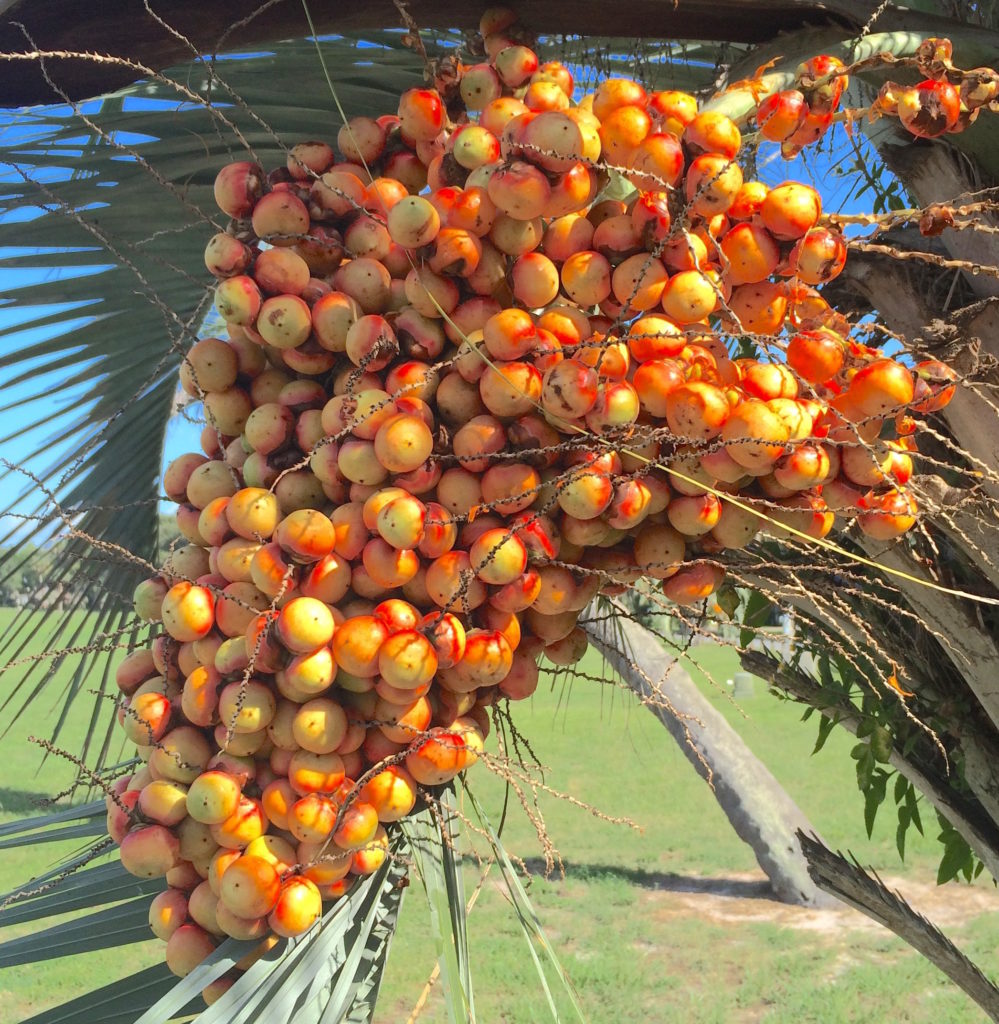
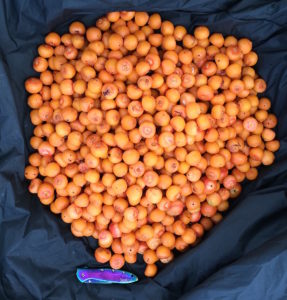
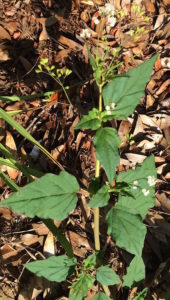
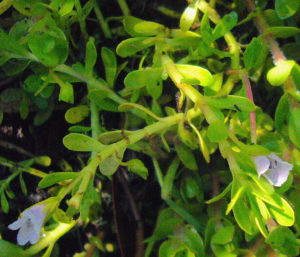
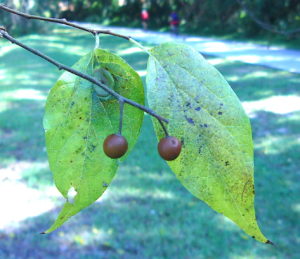
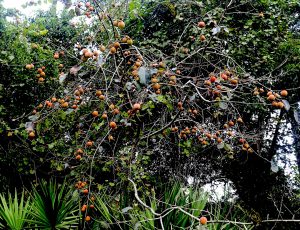
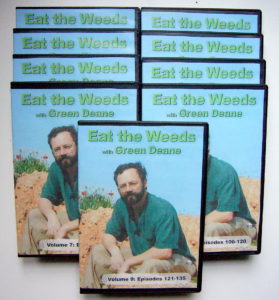
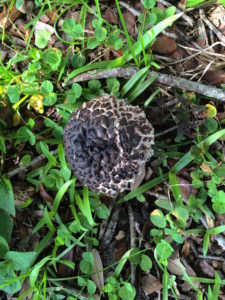
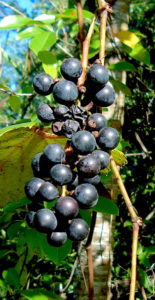

There’s an enzyme you can by that breaks down the pectin and clears up the wine, I use it in my Flatwood Plum wine.
The grapes look delicious! I have noticed here in Northwest Florida that the elderberry are ripening early as well. The grapes are larger than usual at this point up here too.
Hi Green Deane. I just bought a house and want to put in some edible border hedges. What are your recommendations? Coco plums, Suranam cherries,?
Yes and Simpson Stoppers.
Surinam cherries are now on the invasive species list so you may want to reconsider this plant as an option.
I hope on going to bed “ to keep the head cool, the feet “cold” – mine is a different climate – and the bowls open “. Indeed ingenious men like Boerhave – unfair if Green Deane is not included – are great because of the complimentary work they offer to society; allow me to call them “Jacks of all trade” in the sense of integral knowledge – a very rare characteristic nowadays. This is why we have to thank and honour them.
On my part I have not come across White Boarhavia; but on googling, I found the site:” Contribution to the flora of Um[PDF] Rimmitta area, White…” Here a report by scientists –A.K.ElSafori, A.M.Gumma and M.A.ElNour – from University of Khartoum – was included – in which Boarhavia repens var. diffusa L. has been given the vernacular name “Ruba” and described as an annual herb. Rimmitta is in White Nile State and to the south of Khartoum.